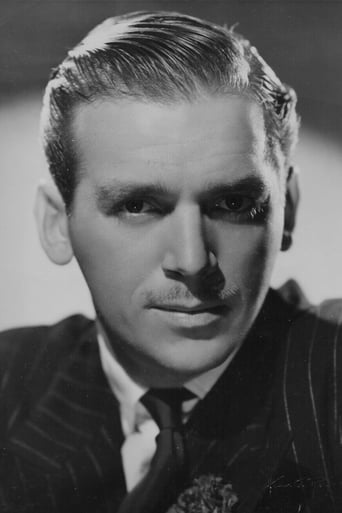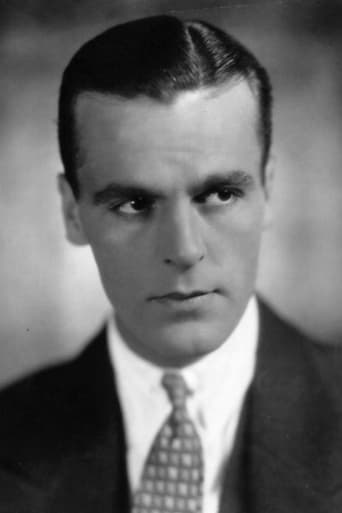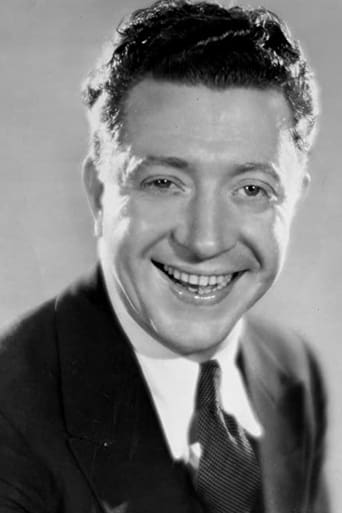Exoticalot
People are voting emotionally.
GurlyIamBeach
Instant Favorite.
Afouotos
Although it has its amusing moments, in eneral the plot does not convince.
GManfred
That's normally the answer to all orders given to the fliers in the day room of "Flight Commander". It signifies neither assent or disagreement, just obedience to official orders. You have to watch the face or listen to the tone to decide whether the recipient is enthused, annoyed or resigned. Such is life on the western front of an RAF outpost during WW1 - and where life is a fragile commodity.Also known as "The Dawn Patrol", it was remade in 1938. That's the one I knew from Million Dollar Movie on Ch. 9 in NYC, and it would play for a whole week. I loved it and watched it as often as I could. I thought no one could beat Errol Flynn and David Niven in the two lead roles, until I saw the original, "Flight Commander" which starred Richard Barthelmess, Neil Hamilton and Douglas Fairbanks,Jr. (Basil Rathbone played the Neil Hamilton role as Commander of the doomed fliers in the '38 version). The acting was far superior in the earlier version, but the later one had better production values. It seems some of the same great aerial footage was used in both films.If I had to pick one, I like this (1930) version better as it was emotionally more satisfying; it had more 'heart'. And Richard Barthelmess was an excellent actor who for some reason couldn't last in talking pictures. I also thought this may have been Fairbanks' best acting job. Well, that's my take on the two films, and that's the best part of going to the movies - it's often subjective, and there's no accounting for taste.
calvinnme
This is an early talkie starring Richard Barthelmess as Dick Courtney and Douglas Fairbanks Jr. as Doug Scott, a couple of World War I aces and the best of friends, at least at the beginning of the film. Neil Hamilton (police commissioner Gordon in the 60's Batman TV series) is Major Brand, in charge of handing out commands and assignments among his group of fliers. One day Courtney and Scott pull off a daring air raid that they have been ordered not to do by Brand. When they return, their success causes Brand to be promoted just as he is about to punish Courtney, and now Barthelmess' Dick Courtney is named as replacement and the new commander of the unit.Now instead of risking death himself, Courtney is the one ordering others into harm's way, and it is cracking him up as he turns more and more to drink. However, he still has Scott's friendship until a new recruit arrives and is ordered into a fatal battle. Now it is Scott who not only has no use for Courtney, but no use for life itself, and it is up to Courtney to make sure that Scott doesn't throw his life away.This film, like many early talkies, is long on talk but short on the kind of aerial action you'd probably expect in a film about World War I fliers. Only towards the last third of the film do you see much in the way of dogfights. The focus is mainly on the fliers themselves and the futility of war. Barthelmess gives a great and poignant performance as Dick Courtney, and he lasted longer in talking pictures than most silent film actors due to his great skill. Also remember that most of the films made about World War I during this time were essentially anti-war films. By the beginning of the depression, WWI seemed a wasted effort in both money and manpower, and these early talking picture war films reflected that attitude.The version of this film starring Errol Flynn is what most people remember. It's too bad this version didn't at least rate as an extra feature on that DVD. It makes for an interesting comparison.
drednm
Terrific war film starring Richard Barthelmess as a veteran British pilot in France whose job is to make raids behind enemy lines in what are basically suicide runs. He complains to his commander (Neil Hamilton) about the green kids he gets, but of course war is hell and there's nothing anyone can do. It seems like every day they send out 5 or 6 planes and 2 or 3 come back. The guys drink heavily to hide their anguish. Barthelmess and Hamilton fight constantly until Hamilton is promoted and Barthelmess gets his desk job.Now it's his job to send out the fliers. His best friend (Douglas Fairbanks, Jr.) becomes the squad leader as the green kids keep showing up for duty. Then Fairbanks' kid brother arrives. What follows breaks up the friendship between Barthelmess and Fairbanks, but the war drones on.Excellent cinematography of aerial fights and bombing raids. The ending is simply superb, one full of heroism and irony.Barthelmess and Fairbanks are excellent, and Hamilton is also good. Supporting cast includes Frank McHugh, William Janney, James Finlayson, Clyde Cook, and Gardner James.
raskimono
This fine movie directed by Howard Hawks is more potent for its absolutely dazzling aerial photography and filming, one of the best I've ever seen - much better than the eighties Top Gun. First, let me say the late twenties to late thirties was the height of what is known as the Aviator movie. Many hits were scored using this genre including this one which was a blockbuster in 1930. The thirties aviator movies in their flight sequences have a certain feeling to them. They are so realistic in look, and this is achieved without music being used, but just the whirring of the engines gaggling, give it a prescient omniprescence that advances in movie technology, Digital imagery and CGI can't duplicate. I mean, any of the thirties aviator pictures sparkle in their flight segments. It must be the way they were shot. I wonder what technique was used. The story for this movie which won an Oscar was written by John Monk Saunders who obviously knew the genre well. He also wrote Wings, the first Academy award winner, Legion of the Condemned, an even bigger hit than Wings with Gary Cooper, Devil Dogs of the Air and West Point of the Air. The leads are Richard Barthelmess and Doug Fairbanks jr. Barthelmess gives the real performance here while Fairbanks gives the movie star performance. They are involved in WWI and are ace pilots and best of friends. The film has a pandemic tone and regurgitating pace that feeds the ennui of war. Like the pilots of Top Gun, they tend to go against orders given by their boss, silent screen leading man, Neil Hamilton who has the tough job of sending men on their missions, missions in which lives will surely be lost. He doesn't like it but he has to follow orders. That is the theme of the movie, obeying and serving your job because it is necessary. Life is hard and fulfilling your function/role against all odds is rote. Tough choices have to be made for the greater good. Cliche but true. That is the irony of war and when one falls, another must takes his place. Barthelmess eventually takes Hamilton's job and in his shoes feels the pressures the man felt and the toughness of following necessary orders. It is not an anti-war movie, more than it is a WAR IS HELL! but heaven is only one more day of hell away. Slow because of early talkie cameras which needed absolute silence to be recorded and were static without any movement, but sets are highly believable and bombing raids uncharacteristically realistic. Dialogue though is a bit pedestrian with certain heavy-handed moments, in today's glare, and performances not up to par in certain areas but overall, a fine movie.





